New cards being better than old cards is inevitable - new spaces in card design must be explored, lest the game becomes stale. Sometimes this is referred to as powercreep, but such a term seems loaded. I would say that card design evolves instead as a result of pushing the limits of a card game's restrictions.
Defining Card Design Spaces in Yugioh
"Post-modern" is only a useful term for us if we can use it as a point of comparison to the "modern." I would argue that there are five historic "Card Design Spaces" that indicate the trend of power in those times.
- Base
- Archetypal
- Synergistic
- Modern
- Post-Modern
Base
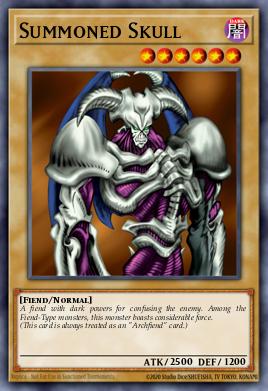
While short lived, Base Yugioh card design is simple, with emphasis on developing monsters and attacking - a simple premise for a humble beginning. Monster cards are judged based on their ease of summon compared to their ATK points, with a standout being Summoned Skull! Similarly, high-ATK level four monsters are a staple as well.
Spell cards at the time had narrow effects that either destroyed a particular type of card or increased ATK points. Cards like Axe of Despair doubled as monster removal, since you couldn't waste battle Trap cards on just any monster.
Archetypal
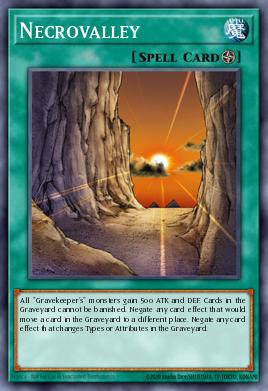
Until the advent of archetypes, decks were built with the cards that were the most efficient, but any form of incentive to play certain cards together was incidental at best. Then, archetypes started appearing: cards with built-in incentive to play with each other. One of the first successful examples of this was Gravekeepers, which created a midrange core between Necrovalley, Gravekeeper's Chief, and especially Gravekeeper's Spy. This trend would continue, with the benefits increasing, with the strongest archetype of this time being Six Samurai, a deck that actively rewards the player with card destruction when played together.
Synergistic
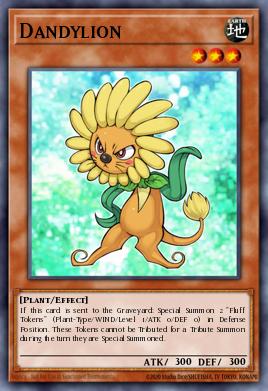
A return to form, so to speak, to the Base era, where cards are played together purposefully despite not sharing an archetype. While certain decks adhere to an archetype such as Blackwings or Lightsworn, they only loosely gain effects by being used together. This type of deckbuilding culminates in fan-favorite "Dandywarrior," combining Dandylion with Quickdraw Synchron to Synchro Summon without needing a Normal Summon. Generally, most decks can summon one or two 2000+ Atk monsters and destroy cards on the field. Card design of this era tends to create smaller monsters to make use of for Synchro Summoning.
Modern
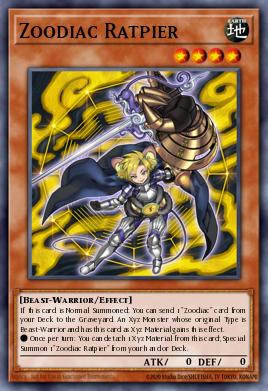
Modern Yugioh begins to change the focus of gameplay from largely resource-based to being tempo-based; that is to say, your strategy should now develop a "board," or a set of monsters that can interrupt the opponent on their own turn, while being able to "break" boards, or remove threats to you establishing monsters. Card design of this era is oddly powerful, with cards like Zoodiac Ratpier allowing for game-breaking one card combos. These combos differentiate themselves from powerful cards like Tour Guide From the Underworld because they create a board all by themselves, as opposed to a single point of interaction. The expectation of what one card does is higher now, meaning you can dedicate more cards in your deck to breaking the easily-created field of monsters.
Post-Modern
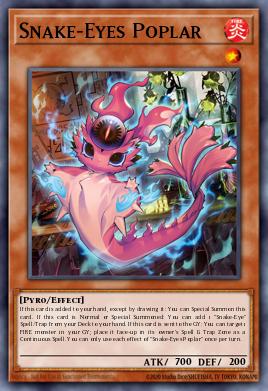
And now we arrive in the future, and the point of this article! Post-Modern Yugioh design is a fairly new design space, with only a few decks having access to the cards that mark this era. Cards in the Post-Modern era are denoted by one of two factors: compressing multiple roles into one card, and/or having three or more effects. Largely, these factors go hand in hand.
The first card of this era is Snake-Eyes Poplar. This card is a self-starter, meaning that it Special Summons itself for the quaint condition that it is added to the hand. Second, it's an extender, adding Original Sinful Spoils - Snake-Eye to the hand to fetch Diabellstar the Black Witch, and so on and so forth. Finally, Poplar places a monster into the S/T zone, setting up for a future combo.
So a starter, extender, and grind resource for later - that's a lot for one card! In fact, future cards of this nature will be referred to as "Poplars."
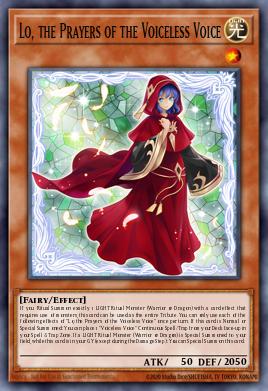
Another example of a Post-Modern card is Lo, the Prayers of the Voiceless Voice, yet another Monster that can Special Summon itself and gain resources. While Lo isn't as powerful as a combo starter as Poplar, it is stronger in the grind game department, being able to Special Summon herself as you naturally progress through the Voiceless Voice gameplan.
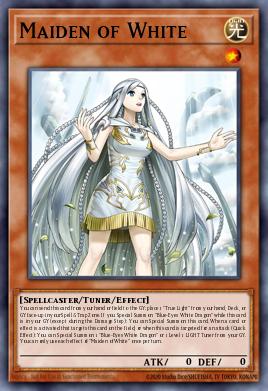
The most modern example of Post-Modern card design is Maiden of White. While Blue-Eyes is only high-tier contender, Maiden of White is, in a vacuum, one of the most powerful Yugioh cards designed to date. Its first effect fetches True Light face-up, skipping the Trap card restriction of having to be set for a turn. Maiden alone changes the function of the entire card, essentially making True Light a Continuous Spell! Furthermore, Maiden can place True Light from the Graveyard or Hand. This effect has multiple ramifications.
Maiden will never be a dead card - you either have True Light on the board, in which case your grind game is set, or Maiden can fetch True Light back. You can't even brick on Maiden if you draw True Light - she can place it from hand too! Maiden compresses the role of starter, extender, and grind resource in one effect.
But she has more than one effect! When you summon Blue-Eyes White Dragon, she summons herself back to the field. Then, if she is targeted, she revives a Blue-Eyes White Dragon or a Level 1 Light Tuner from the GY. Maiden of White represents a whole deck's strategy supplimented with one card, as opposed to the Modern era, where you still need to run cards to provide a grind game.
What Does Post-Modern Design Do for the Game?
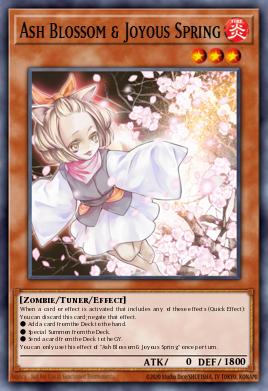
As mentioned previously, this phenomenon is often referred to as "power creep." But I think this is a misnomer - the increasing power of cards isn't always a bad thing for balance or enjoyable gameplay. Having card roles become compressed means running less engine pieces, and being able to play more board breakers and hand traps. While cards like Ash Blossom & Joyous Spring have less impact on an overall opposing strategy, you also get to play more of these cards. For now, Post-Modern card design seems to be having a slow rollout, with one of such cards gracing a deck at a time. It's exciting - and perhaps frightening! - to think of whether the cards of the future will continue to gain unprecedented fourth effects, or if the quantity of Post-Modern cards in decks will increase.




